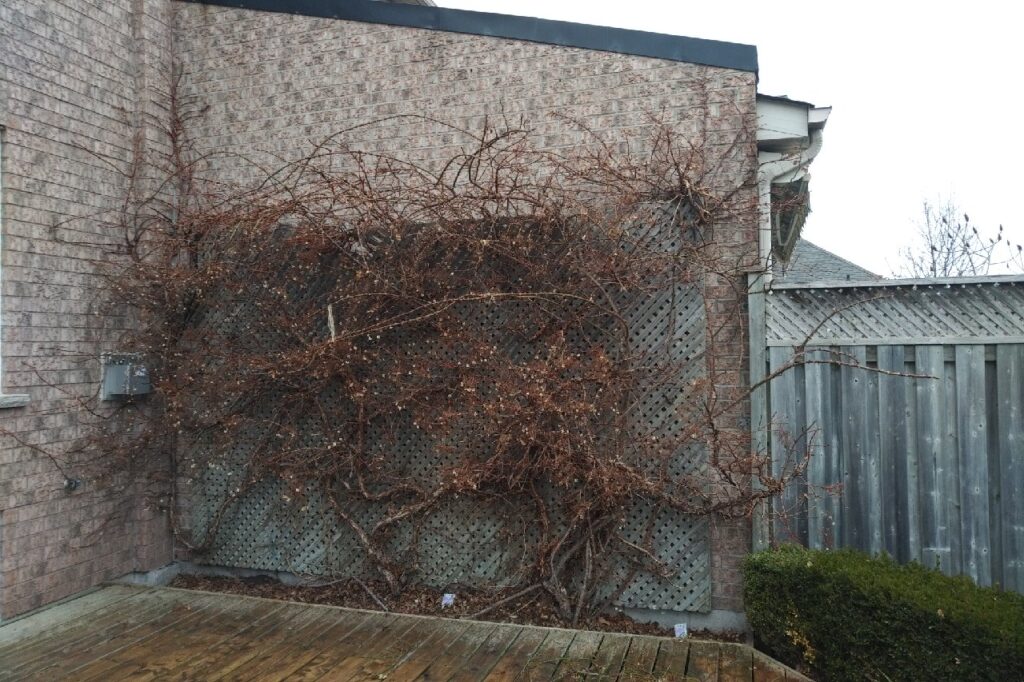
I have never pruned my climbing hydrangea. It shares some lattice work against brick wall with a New Dawn climbing rose that was planted at the same time. the hydrangea has taken over the wall. I am currently pruning the rose but I am wondering if I can still prune the hydrangea, or wait until it blooms this year. It has also grown through the lattice work and pulled it away from the wall, so I have to replace the lattice work this year. Should I cut the stems that are behind the lattice work? Or should I not bother replacing the lattice work?
Thank you for contacting Toronto Master Gardeners about the care of your climbing hydrangea. Wow, what a healthy looking hydrangea (Hydrangea anomala Subsp. petiolaris). This beautiful woody climbing vine, with flower clusters up to 25 cm in diameter, is native to the Himalayas, Japan and China. Both your climbing hydrangea and New Dawn climbing rose (Rosa ‘New Dawn’) are vigorous growers which benefit from regular pruning. Yours is a great question about the timing of pruning your hydrangea. While early pruning benefits your rose, unlike the rose, you would be best to delay pruning of the live growth of your hydrangea until after it has bloomed otherwise you will lose this season’s fragrant blossoms which are, as you are undoubtedly aware, bee, butterfly and other pollinator magnets. At this time, pruning should be restricted to removing the dried flower heads and winter-killed and damaged shoots and branches. Maintenance pruning is done immediately after blooming to avoid cutting off the buds which form right after blooming. These new buds will give rise to next year’s flowers.
Since you have identified that your hydrangea is quite overgrown, it is recommended that gradual pruning be done to reduce its size over a 2 to 3 year period. Since the lattice has peeled away due to age, the heaviness of the hydrangea and the branch growth behind it, it should be replaced. You could remove the branches behind the trellis, if necessary, to have the plant fit closer to the support. From personal experience, it is possible to peel away the hydrangea’s aerial rootlets to set up a new support to which you would tie the trunk at side branches until new aerial rootlets develop. Alternatively, according to Dyer (see reference below), you could cut the vine to the ground. This would rejuvenate the growth and allow you to more easily replace the hydrangea’s support with a sturdier version, however, you will lose next year’s flowers. Should you decide to go this route, you would be advised to consult with Landscape Ontario or your local garden centre for further information.
N.B. When pruning any plant, remember to carefully sterilize cutters between plants to prevent disease transmission.
For more information, please see:
Dyer, H. https://www.gardeningknowhow.com/ornamental/vines/climbing-hydrangea/climbing-hydrangea-pruning.htm
https://landscapeontario.com/climbing-vines
https://www.torontomastergardeners.ca/askagardener/training-and-trimming-climbing-hydrangeas
Wishing you success in pruning your wonderful climbing hydrangea.
March 18, 2018

